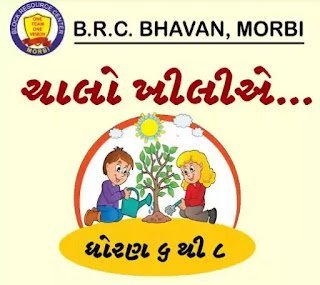CLAAS 6 TO 8 CHALO KHILIYE
CLAAS 6 TO 8 CHALO KHILIYE Prepared by Morbi BRC MORBI AND HIS TEAM.
When children come to school, they already have control over at least one spoken language. They are aware of the environment and have also experimented with written forms of communication by scribbling on walls, mud, paper, books, etc. These experiences of children reflect the fact that reading and writing are interrelated in children at the same time. Children may not first learn how to read and then how to write.
For some children, writing is often easier than reading. (Clay 1991) Children’s daily observations show that listening, speaking, reading and writing are in no way linear or separate processes. Research on the study of literacy clearly shows that the processes of listening, seeing, reading, writing and thinking develop together, (2000). In schools, these findings and children’s rich experiences should be taken into account in the learning process.
CLAAS 6 TO 8 CHALO KHILIYE
The goal must be understood in all reading situations. “The message conveyed in the printed text must be understood. Literacy is seen not only as decoding but as the whole function of reading, including understanding.” (Mason and Singh 1993) Reading and writing both Children use their previous experiences and other contextual clues to make sense of reading and writing meaningful texts. This understanding empowers teachers to stay away from certain preconceived ways and methods and to help them deal creatively with specific classroom needs
Literature for children: It is important that children get books that can enhance their literacy. Children’s literature is written especially from a children’s point of view. This is considered the official source of reading material. Literature becomes an essential resource in the process of literacy and language learning in the early years.
CLAAS 6 TO 8 CHALO KHILIYE
It stimulates children’s spontaneous reactions, rather than paving the way for a natural way of learning the language. Reading stories exposes children to the process of learning language skills seamlessly. For example, a children’s story or poem inspires children to read, speak and write. It is important to develop criteria for the selection of children’s literature, taking into account the age, interests, language and appropriate theme for children.
NAVODAY VIDYALAYA APPLY ONLINE WATCH VIDEO:-
CLAAS 6 TO 8 CHALO KHILIYE
CLAAS 6 TO 8 CHALO KHILIYE DOWNLOAD PART 1
CLAAS 6 TO 8 CHALO KHILIYE DOWNLOAD PART 2
CLAAS 6 TO 8 CHALO KHILIYE DOWNLOAD PART 3

